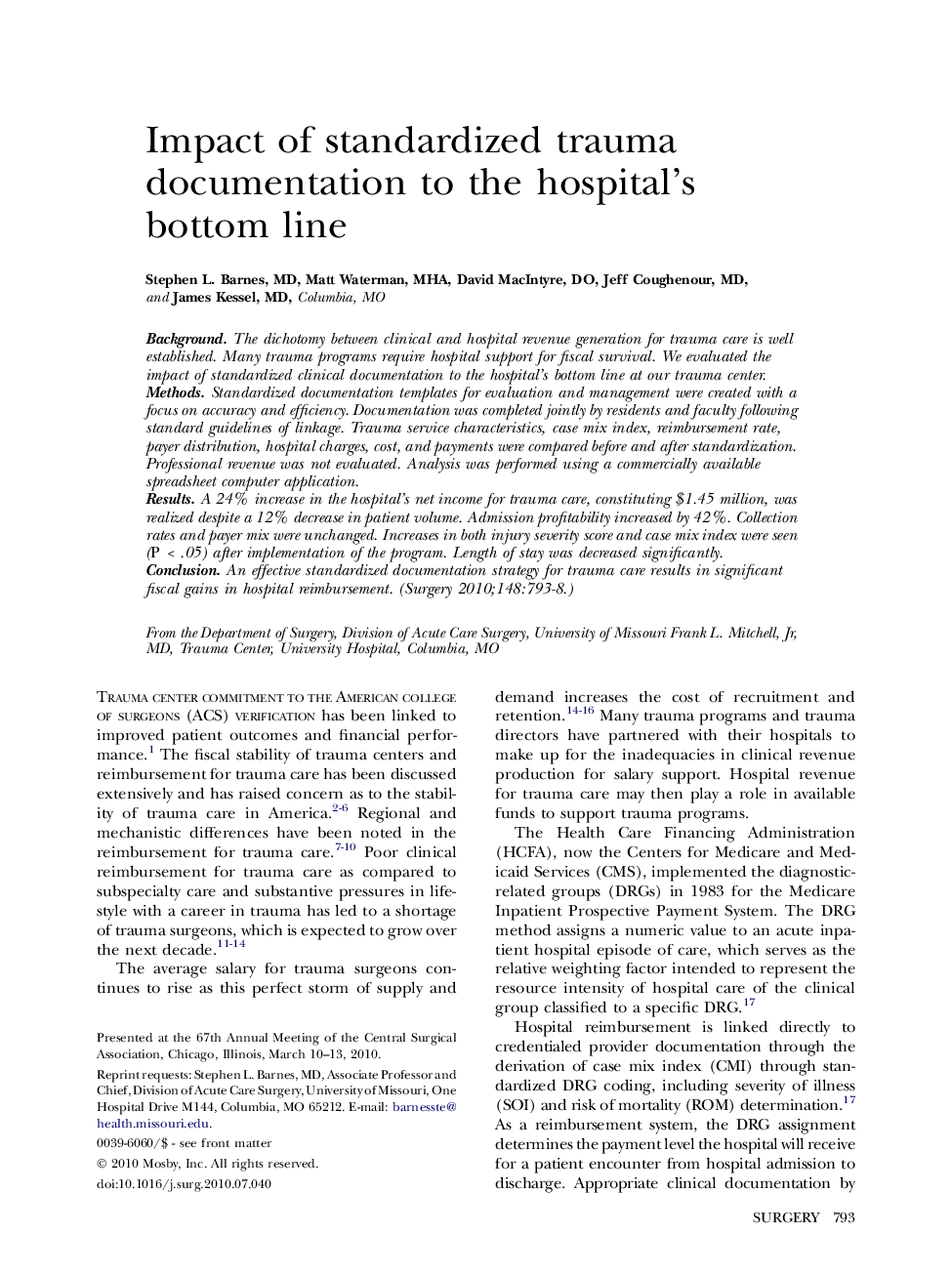| Article ID | Journal | Published Year | Pages | File Type |
|---|---|---|---|---|
| 4309052 | Surgery | 2010 | 6 Pages |
BackgroundThe dichotomy between clinical and hospital revenue generation for trauma care is well established. Many trauma programs require hospital support for fiscal survival. We evaluated the impact of standardized clinical documentation to the hospital's bottom line at our trauma center.MethodsStandardized documentation templates for evaluation and management were created with a focus on accuracy and efficiency. Documentation was completed jointly by residents and faculty following standard guidelines of linkage. Trauma service characteristics, case mix index, reimbursement rate, payer distribution, hospital charges, cost, and payments were compared before and after standardization. Professional revenue was not evaluated. Analysis was performed using a commercially available spreadsheet computer application.ResultsA 24% increase in the hospital's net income for trauma care, constituting $1.45 million, was realized despite a 12% decrease in patient volume. Admission profitability increased by 42%. Collection rates and payer mix were unchanged. Increases in both injury severity score and case mix index were seen (P < .05) after implementation of the program. Length of stay was decreased significantly.ConclusionAn effective standardized documentation strategy for trauma care results in significant fiscal gains in hospital reimbursement.
